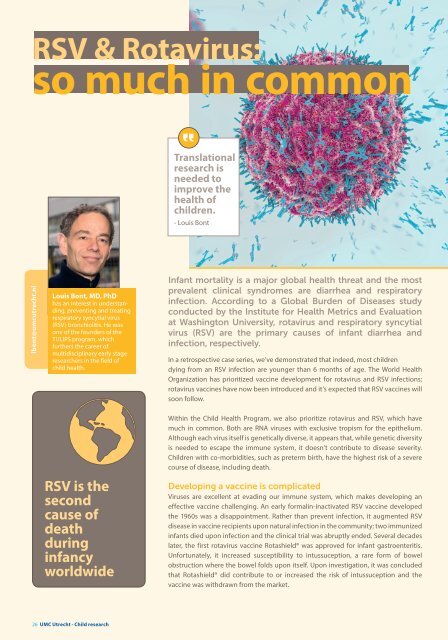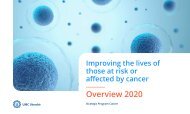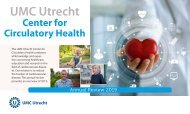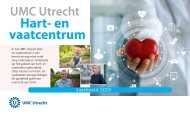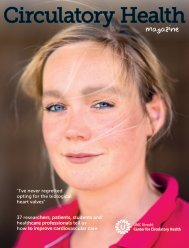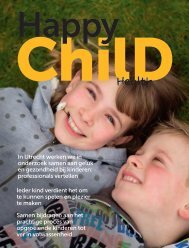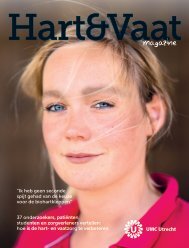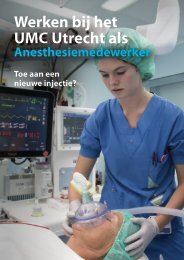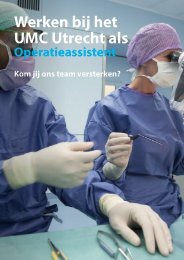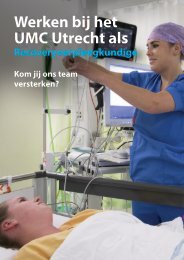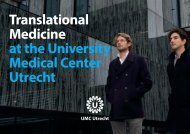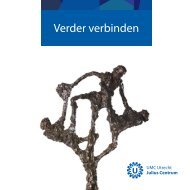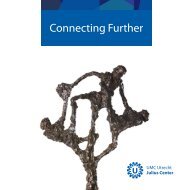Child research
Create successful ePaper yourself
Turn your PDF publications into a flip-book with our unique Google optimized e-Paper software.
RSV & Rotavirus:<br />
so much in common<br />
Translational<br />
<strong>research</strong> is<br />
needed to<br />
improve the<br />
health of<br />
children.<br />
- Louis Bont<br />
<br />
lbont@umcutrecht.nl<br />
Louis Bont, MD, PhD<br />
has an interest in understanding,<br />
preventing and treating<br />
respiratory syncytial virus<br />
(RSV) bronchiolitis. He was<br />
one of the founders of the<br />
TULIPS program, which<br />
furthers the career of<br />
multidisciplinary early stage<br />
<strong>research</strong>ers in the field of<br />
child health.<br />
Infant mortality is a major global health threat and the most<br />
prevalent clinical syndromes are diarrhea and respiratory<br />
infection. According to a Global Burden of Diseases study<br />
conducted by the Institute for Health Metrics and Evaluation<br />
at Washington University, rotavirus and respiratory syncytial<br />
virus (RSV) are the primary causes of infant diarrhea and<br />
infection, respectively.<br />
In a retrospective case series, we’ve demonstrated that indeed, most children<br />
dying from an RSV infection are younger than 6 months of age. The World Health<br />
Organization has prioritized vaccine development for rotavirus and RSV infections;<br />
rotavirus vaccines have now been introduced and it’s expected that RSV vaccines will<br />
soon follow.<br />
RSV is the<br />
second<br />
cause of<br />
death<br />
during<br />
infancy<br />
worldwide<br />
Within the <strong>Child</strong> Health Program, we also prioritize rotavirus and RSV, which have<br />
much in common. Both are RNA viruses with exclusive tropism for the epithelium.<br />
Although each virus itself is genetically diverse, it appears that, while genetic diversity<br />
is needed to escape the immune system, it doesn’t contribute to disease severity.<br />
<strong>Child</strong>ren with co-morbidities, such as preterm birth, have the highest risk of a severe<br />
course of disease, including death.<br />
Developing a vaccine is complicated<br />
Viruses are excellent at evading our immune system, which makes developing an<br />
effective vaccine challenging. An early formalin-inactivated RSV vaccine developed<br />
the 1960s was a disappointment. Rather than prevent infection, it augmented RSV<br />
disease in vaccine recipients upon natural infection in the community; two immunized<br />
infants died upon infection and the clinical trial was abruptly ended. Several decades<br />
later, the first rotavirus vaccine Rotashield® was approved for infant gastroenteritis.<br />
Unfortunately, it increased susceptibility to intussuception, a rare form of bowel<br />
obstruction where the bowel folds upon itself. Upon investigation, it was concluded<br />
that Rotashield® did contribute to or increased the risk of intussuception and the<br />
vaccine was withdrawn from the market.<br />
26 UMC Utrecht - <strong>Child</strong> <strong>research</strong>


